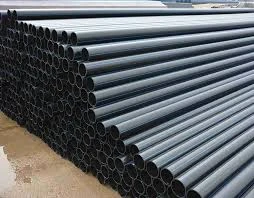Nov . 16, 2024 16:32 Back to list
Exploring the Benefits and Applications of HDPE Water Pipes in Modern Infrastructure
The Advantages of HDPE Water Pipes
High-Density Polyethylene (HDPE) water pipes have quickly become a staple in the infrastructure of modern water distribution systems. Their unique properties make them particularly well-suited for a variety of applications, from municipal water supply to irrigation systems. In this article, we will explore the advantages of using HDPE water pipes and why they are becoming the preferred choice for engineers and municipalities alike.
Durability and Longevity
One of the most significant benefits of HDPE water pipes is their excellent durability. Made from high-density polyethylene, these pipes are resistant to corrosion, chemicals, and environmental stressors. Unlike metal pipes that can succumb to rust and decay, HDPE pipes remain intact for decades, often boasting a lifespan of 50 years or more. This long-lasting durability reduces the frequency of repairs and replacements, ultimately saving municipalities time and money.
Flexibility and Lightweight
HDPE pipes are known for their flexibility, which allows them to bend and adapt to the terrain without breaking. This flexibility is especially advantageous in areas with shifting soil or where ground movement is a concern. Additionally, HDPE pipes are considerably lighter compared to traditional materials like concrete or metal. Their lightweight nature not only eases transportation and installation but also reduces the need for heavy machinery, further cutting down on construction costs.
Resistance to Leaks
hdpe water pipe

Leakage is a prominent issue in water distribution systems, leading to significant water loss and increased operational costs. HDPE water pipes are designed with fusion technology that creates seamless joints. This feature minimizes the potential for leaks, ensuring a more reliable water supply. By reducing leakage, municipalities can conserve water and lower treatability costs.
Environmental Impact
As environmental concerns grow, the importance of sustainable materials in infrastructure becomes paramount. HDPE pipes are 100% recyclable, which means they can be repurposed at the end of their life cycle. Furthermore, the production process of HDPE pipes generates fewer greenhouse gases compared to traditional materials. This commitment to sustainability helps communities strive toward more environmentally friendly practices.
Cost-Effectiveness
While the initial investment in HDPE water pipes may seem higher than traditional alternatives, the long-term benefits significantly outweigh the costs. With their durability, low maintenance requirements, and reduced likelihood of leaks, HDPE pipes prove to be an economically sound choice over time. Municipalities can allocate their resources more effectively, ensuring that funds are used for development and maintenance rather than constant repairs.
In conclusion, HDPE water pipes are revolutionizing the way we think about water distribution systems. Their durability, flexibility, resistance to leaks, and environmental friendliness make them an ideal choice for modern infrastructure. As more municipalities recognize these benefits, the shift towards HDPE pipes will certainly continue, paving the way for a more sustainable and cost-effective future in water management.
-
High-Quality PPR Pipes and Fittings Durable ERA PPR & PVC PPR Solutions
NewsJul.08,2025
-
Black HDPE Cutting Board - Durable, Non-Porous & Food Safe HDPE Plastic Cutting Board
NewsJul.08,2025
-
High-Quality CPVC Panel Durable HDPE & PVC Panels Supplier
NewsJul.08,2025
-
Double PE Welding Rod Supplier - High Strength, Durable & Versatile Welding Solutions
NewsJul.07,2025
-
High-Quality PVC-O Pipe Supplier Durable 75mm PVC Pipe & Connections Leading PVC Pipe Company
NewsJul.07,2025
-
HDPE Drainage Pipe Supplier – Durable & Corrosion-Resistant Solutions
NewsJul.06,2025

